The view from your room at the Fogo Island Inn can be of next to nothing – just a thin line of terracotta coloured shoreline fading into an endless ocean painted with a milky glaze of fog. The void is one of the many cues this place gives you to take things a little slower, to spend an afternoon by the nearest fire with a pair of binoculars just in case an iceberg emerges from the emptiness.
It’s also a minimalist backdrop for the whimsical decor that surrounds you inside. Ten years after the Newfoundland hotel opened (on, as many people say: an island off an island off the east coast of Canada), its furniture pieces, textiles and home accessories have become as emblematic of Fogo as architect Todd Saunders’s design of the inn building itself, perched on its wonky stilts above the rocky landscape. Colourful settees (or, in more Fogo terms, “settles”) wrapped in curvaceous spindles and chairs upholstered in felt waves are synonymous with how the island’s visual vernacular has been reworked for its interiors as well as homeowners thousands of kilometres away.
A decade since the inn opened, there’s enough hindsight to think of these objects as a starting point. Much like how its founder Zita Cobb conceptualized the hotel and the Shorefast foundation that operates it to open up new pathways to economic stability for her community, its design aspirations have created their own creative ripples.
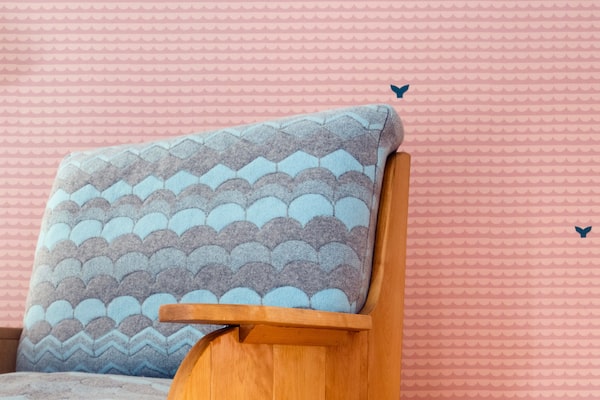
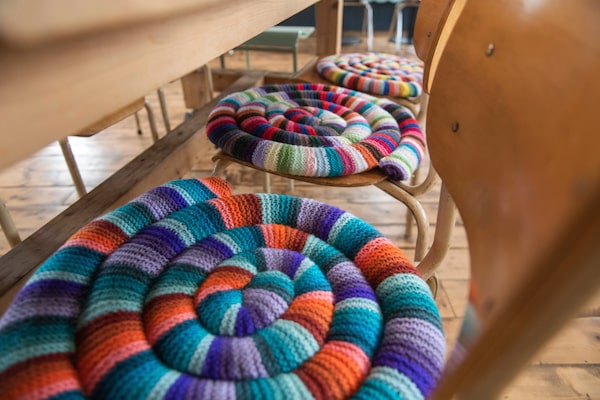
At Fogo Island Workshops, creations like the wavy Bertha chair and wooly snake cushions have built a distinctive craft look for the community.
Across a few hundred metres of mossy terrain from the inn is SUF Hall, the home of Fogo Island Workshops. The building’s original purpose for the inn project was ephemeral: mill hundreds of black spruce and yellow birch boards to clad the hotel and its outbuildings. But when it came time to furnish the space, one international designer made a suggestion that solidified its long-term mission.
“[British designer] Ilse Crawford came out to do a bit of an interior design study,” says Michael Murphy, Fogo Island Workshops’ vice-president. “She came to the conclusion quite quickly that you can’t go so far with the architecture and make it of the place, and then put Italian furniture inside. She really encouraged Zita to use the talent that was inherent in everyone around.”
Cobb convened a summit of designers, both locals and “come from aways,” who distilled Fogo’s aesthetic and the skillset of the community into furniture and accessories that are also cultural artefacts. “That meant it had to hold on to the craft or the tradition or the spirit of the place but give it new form to carry it forward into the future,” Murphy says.
The piece that best captures this idea is the Punt Chair, which translates the technique of using the curve of juniper trees to form the ribs of fishing boats into a handsome seat. French-Canadian designer Elaine Fortin’s chair is currently on display in the Canadian Modern exhibition at the Royal Ontario Museum in Toronto.
Inn guests were captivated by the objects that surrounded them. The orders they placed kept the workshop humming and that business now takes precedence over the aesthetic upkeep of the hotel. “Because the inn stuff is so expressive and, in a lot of cases, is really designed for that place, it doesn’t always travel everywhere as easily as it could, because people don’t have that kind of scale or space to give the aesthetic room to breathe,” Murphy says.
A line of more modestly detailed and scaled pieces called Premises debuted in 2022. “The new collection is meant to connect smaller, residential-scale living on Fogo Island to a modern urban experience,” Murphy says.
While an armchair lacquered in bold green or a doorstop shaped like a saltbox house may be more manageable for domestic rooms, they still pack in the cultural context, economy of materials and human authorship that Murphy says forms the ethos of making on Fogo Island.
:format(jpeg)/cloudfront-us-east-1.images.arcpublishing.com/tgam/QGO5ARRPVRAKTGBEWVR4HCJ4B4.jpg)
:format(jpeg)/cloudfront-us-east-1.images.arcpublishing.com/tgam/6XSFVEPNXZD53GAYU5NEL4M7SA.jpg)
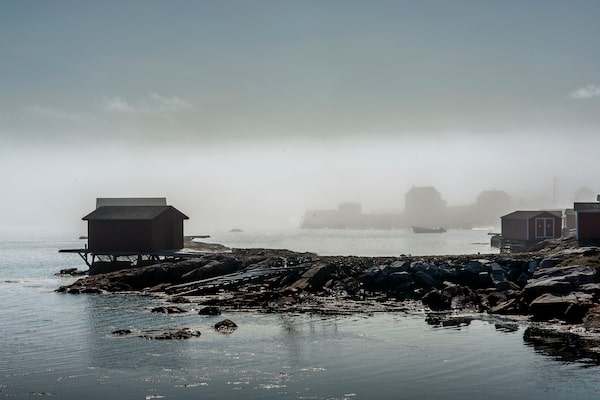
The fishing stages and saltbox houses have become inspirations for contemporary designs from the island.
Understanding Fogo’s history has informed much of that philosophy. Cobb’s design summit was grounded in research by the historian Walter Peddle. Another Premises collection standout, the Pins Table by Japanese designer Wataru Kumano, references footage of local children walking around on thin stilts in the National Film Board’s Fogo Process documentary series from the 1960s. But new, outside perspectives have been essential too, creative expats who have been lured to Fogo by the space to become part of its design experiment.
“It’s such an interesting place, architecturally,” says architect Kingman Brewster, who originally moved from New York to Fogo to work on the interior finishes of the inn and, later, SUF Hall. Eleven years on, he’s still here. “Its physical isolation and distance away and separation from other parts of the world have maintained a connection to an older way of doing things – a more direct relationship to making and building.”
The opportunity to create something new in that environment is a big draw. Outside of the Shorefast universe, Brewster is completing a private home south of the inn on the harbour of Joe Batt’s Arm. Called the Eel Brook House, it references the local concept of each function of a home having its own building – here, an area for gathering, a couple of bedrooms and an intimate meditation shed – in sensitively scaled structures clad in lightly charred spruce boards. “It’s a situation where you can be in direct dialogue with what has come before – what previous generations have made and have learned and have struggled with.”
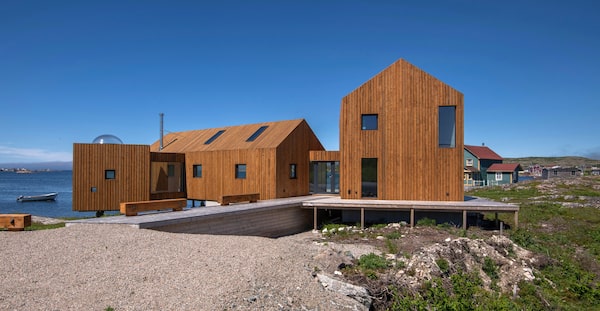
Eel Brook House was designed by architect Kingman Brewster, who moved to the island from New York 11 years ago.
:format(jpeg)/cloudfront-us-east-1.images.arcpublishing.com/tgam/N2GPXIUBD5AMJCT6L7MESQQYSY.jpg)
:format(jpeg)/cloudfront-us-east-1.images.arcpublishing.com/tgam/HYQCUPTNNRHS7A56VXGRCM5VSI.jpg)
That generational knowledge stands out to potter Sarah Fulford when she teaches islanders at her Fogo Clay Studio. “I’ve been teaching for many, many years and the people here, they pick it up faster than I’ve ever seen before. They seem to have an aptitude for making things,” she says. “That may be because they’ve been isolated and they’ve had to understand how to make things work.”
Fulford’s Fogo origin story mirrors that of many outsiders who’ve made the move east since the opening of the inn. While operating LOAM Clay Studio in Ottawa, a student, entrepreneur Tracey Clark, asked Fulford if she’d consider opening an outpost on Fogo. At the time, Clark was a Shorefast board member and she invited Fulford to visit Fogo on an exploratory mission. “It was in April and, probably lucky for her, the weather was spectacular,” Fulford says. “I saw whales from the dining room of the Fogo Island Inn and I saw caribou and mink and every animal. It was as if it had been staged for my presence. I kind of fell in love with the place, as a lot of people do when they come and visit.”
While Fulford’s plan was to split her year between Ottawa and Fogo, she now lives in Fogo full-time with her partner Peggy White, who builds guitars in a space below the clay studio (the couple also hosts pottery retreats with guests bedding down at their saltbox next door). She has no formal connection to the inn or Shorefast but teaches inn guests and creates dishware for the hotel. “I get the feeling that they would love for there to be more independent businesses that they did not have a direct hand in,” she says. “They try to encourage people to stand on their own two feet and take off and run a business that will contribute to the community in some way.”
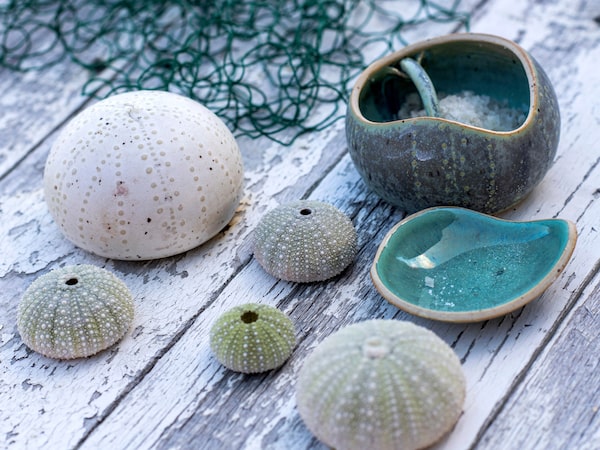
Some of Fulford's pots resemble sea-urchin shells.
Her time on the island has shifted how Fulford channels Fogo into her pottery. Early work focused on nature (nesting bowls that captured the hues of the island’s seven seasons; pots that mimic the shells of sea urchins) but now practicality enjoys equal weight. “The focus became more on how it was used rather than what it looked like,” she says. Pin cushions cater to local quilters and ash buckets address where to safely dispose of your wood stove leftovers. “These are the things that are a little more fundamental to living on Fogo Island.”
“It’s really about community and community economies in the end,” says Murphy about how Shorefast and the Workshops similarly leverage beautiful design to help meet the island’s day-to-day needs. This fall, the Workshops is expanding how customers far and wide can access its wares through a partnership with Goodee, the Canadian design e-tailer. On the island, the inn is embarking on a contemporary reimagining of the Big Church, which marks the entrance to the hotel and will become a hub for its arts programming.
“In terms of Fogo, [these projects have] really helped people understand the value of what they have created and how much artistry and design is actually within the community,” Murphy says. “A lot of people thought it was just something they did as a pastime or something they had done out of necessity in the past, when really it’s high design.”
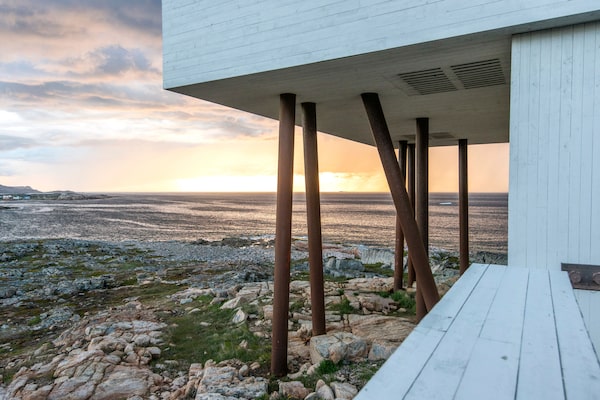
Style Advisor travelled to Fogo Island as a guest of Fogo Island Inn and Newfoundland and Labrador Tourism. They did not review or approve this article prior to publication.



